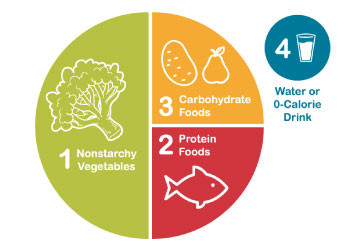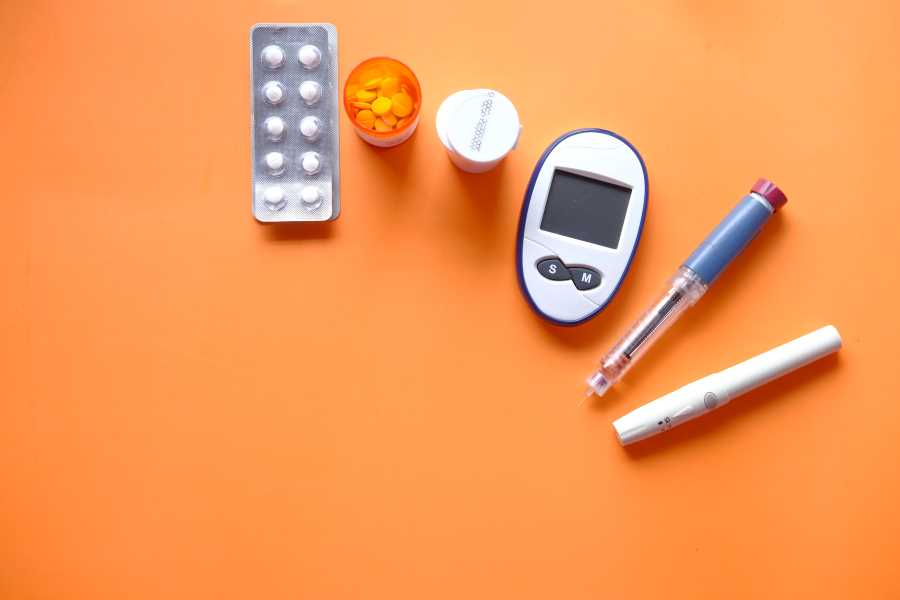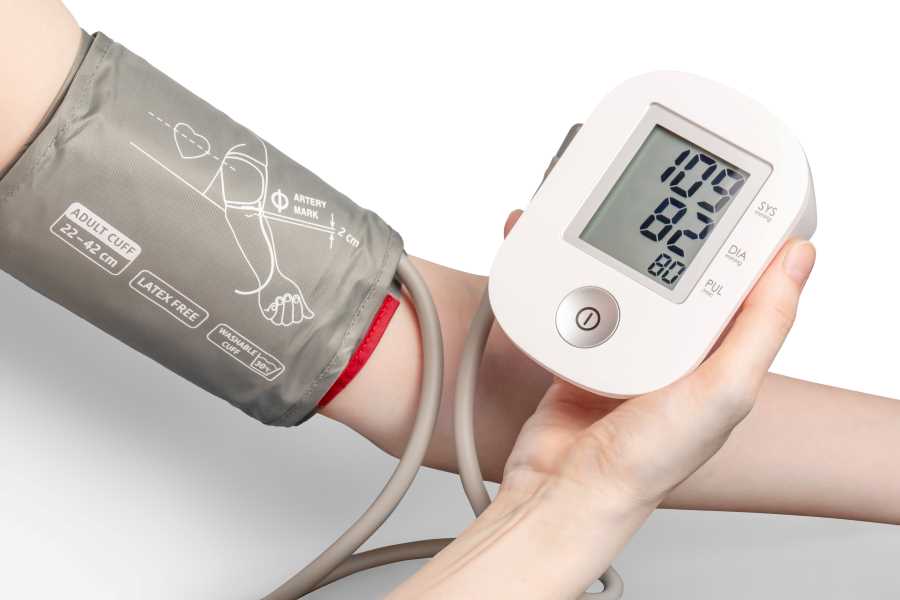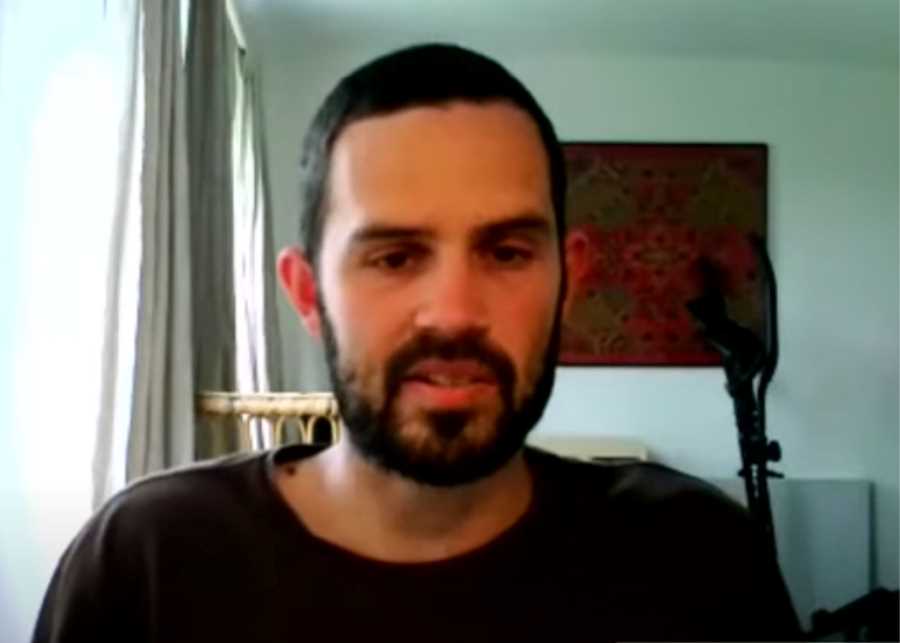The current consensus view of the medical profession is there is no cure for type 2 diabetes, however, appropriate changes in diet and exercise can help manage the condition or even reverse it. In this post, we will look at why the carnivore diet can potentially help reverse type 2 diabetes.
In particular, we will first look at what is type 2 diabetes and the process in which a person transitions from a metabolically healthy individual to someone with type 2 diabetes.
We will then look at symptoms, prevalence, causes, and current treatments for type 2 diabetes.
Finally, we will look at why the carnivore diet can help reverse type 2 diabetes and the available evidence.
Please note that if you have type 2 diabetes and are currently on medications, it is very important to consult with your doctor before changing your diet due to the potential impact the diet may have on your blood sugar levels and your medication needs.
What is type 2 diabetes?
Type 2 diabetes is a condition in which your body doesn’t make enough insulin or doesn’t respond well to insulin.[1]
Below is a short description of the process where you gradually transition from a metabolically healthy person to someone with type 2 diabetes.
When you consume foods containing carbohydrates, your body turns carbohydrates into glucose which then enters the bloodstream.
When blood glucose levels rise, insulin is released by the pancreas to transport glucose into your cells to be used for energy or stored as fat if there is excess energy coming in.
If you consistently consume a large amount of carbohydrates (e.g. cereals, bread, pasta, sugary drinks, and other highly processed sugar-laden foods) over a long period of time, the cells in your body will be filled up with glucose at some point in time. When this happens, the cells will respond less effectively to insulin causing blood glucose to rise.
Initially, as blood glucose rises, the pancreas will respond accordingly and produce more insulin in an effort to bring blood glucose to a normal level.
However, over time, if you keep consuming carbohydrate-rich food, the cells will eventually be over-filled with glucose and can’t take much more.
While the pancreas will keep pumping out insulin in a desperate effort to normalize blood glucose, it has little effect on those glucose-filled cells, they will stop responding to insulin properly, i.e. they have become insulin resistant.
If the pancreas is forced to produce extra insulin to deal with the high blood glucose problem over a long period of time, it will eventually wear out and won’t be able to produce enough insulin to maintain a normal blood sugar level. The pancreas may stop producing insulin altogether and diabetes patients with this condition will have to have insulin injections.
What are symptoms of type 2 diabetes?
Symptoms of diabetes include increased thirst, increased urination, increased hunger, lack of energy and fatigue, bacterial and fungal infections, blurred vision, numbness or tingling in the feet or hands, delayed wound healing, and unexplained weight loss.[2, 3]
How type 2 diabetes affects quality of life?
Diabetes has gruesome effects on the quality of life of people living with this condition.
Diabetes is one of the leading causes of cardiovascular disease, blindness, kidney failure, and amputation of lower limbs.[4]
Health complications relating to diabetes include coronary arterial disease, renal failure, blindness, micro and macrovascular complications, and sexual dysfunction. Comorbidities such as obesity, hypertension, dyslipidemia, depression, arthritis will also decrease diabetes patients’ quality of life further.[5]
In short, if you have type 2 diabetes and do nothing to fix its underlying causes, every part of your body will be affected including your eyes, limbs, heart, brain, kidneys, liver, and reproductive system. Significantly reduced quality of life and premature death are the expected consequences.
Prevalence of type 2 diabetes
Type 2 diabetes is the most common type of diabetes and accounts for around 90% of all diabetes cases.
Type 2 diabetes is most common in people over 45 years of age, but it is increasingly seen in children, adolescents, and younger adults due to rising levels of obesity, physical inactivity, and energy-dense diets.[6]
Diabetes is a worldwide epidemic. It is estimated that 6.3% of the world population or around 462 million individuals were affected by type 2 diabetes in 2017. Diabetes is the 9th leading cause of death and over 1 million deaths per year can be attributed to diabetes alone.[7]
The prevalence of diabetes has been rising across all regions of the world but, alarmingly, much more rapidly in low and middle-income countries than in high-income countries.[8, 9]
In the United States, about 10% of the population or around 34 million Americans have diabetes, of which 90-95% are type 2 diabetes. In addition, 88 million Americans are prediabetes and 1.5 million Americans are diagnosed with diabetes every year.[10, 11, 12]
What causes type 2 diabetes?
The two main causes of type 2 diabetes are lifestyle factors and genes.[13,14]
If you are overweight, obese, abdominally obese, and not physically active, you have a higher risk of developing type 2 diabetes.
If members of your family have type 2 diabetes, you are more likely to develop type 2 diabetes as well.
In the United States, certain ethnic groups (African Americans, Hispanic/Latino Americans, American Indians, or Alaska Natives, Pacific Islanders, Asian Americans) are at higher risk of developing type 2 diabetes.
Certain genes also make you more susceptible to the development of type 2 diabetes.
In my view, diet and lifestyle factors are the most important factors in determining whether someone would develop type 2 diabetes or not.
Four decades ago, the prevalence of diabetes in China was less than 1% and today it is around 10%, on par with some developed Western countries. Surely, their genetics wouldn’t have changed that much in such a short period of time.[15]
What are the current treatments for type 2 diabetes?
The current standard recommendations for type 2 diabetes patients are diet and exercise.
People living with type 2 diabetes are encouraged to follow a diet low in saturated fat, refined carbohydrates, high fructose corn syrup, and high in fiber and monounsaturated fats. [16]
The American Diabetes Association, for example, recommends filling half of your plate with nonstarchy vegetables, one quarter with lean proteins, and one quarter with carbohydrate foods.[17]

Diabetes patients should also try to engage in 90 to 150 minutes of exercise per week and find ways to lose weight.[18]
However, eventually, some diabetes patients will need medications such as:[19]
- Metformin (lowering glucose production)
- Sulfonylureas (supporting insulin secretion)
- Glinides (stimulating the pancreas to secrete more insulin),
- Thiazolidinediones (making tissues more sensitive to insulin),
- DPP-4 inhibitors (reduce blood sugar levels)
- GLP-1 receptor agonists (slow digestion and help lower blood sugar levels)
- SGLT2 inhibitors (inhibiting the return of glucose to the bloodstream)
- Insulin therapy.
These medications have some serious side effects such as nausea, digestive problems, weight gain, risks of congestive heart failure, risk of bladder cancer, risk of bone fractures, risk of pancreatitis, risk of amputations, urinary tract infections, low blood pressure, and high cholesterol.[20]
Type 2 diabetes is clearly a diet and lifestyle disease and should be treated by appropriate modifications in diet lifestyle, there is no other way around it.
Diabetes medications only superficially address symptoms of the disease and do not address the cause of the disease.
According to Dr. Jason Fung, a Canadian nephrologist and an expert on intermittent fasting and low-carb, if you take more and more medications to keep your blood sugar at the same level, why the blood sugar reading might improve, your diabetes is actually getting worse if toxic sugars keep coming in.[21]
“Gradually, every single part of the body just starts to rot: Your eyes rot – and you go blind. Your kidneys rot – and you need dialysis. Your heart rots – and you get heart attacks and heart failure. Your brain rots – and you get Alzheimer’s disease. Your liver rots – and you get fatty liver disease. Your legs rot – and you get diabetic foot ulcers. Your nerves rot – and you get diabetic neuropathy.”
Dr. Jason Fung
Can the carnivore diet reverse type 2 diabetes?
In theory, the carnivore diet can reverse type 2 diabetes because it addresses the root causes of type 2 diabetes which is the chronic influx of glucose from dietary sources resulting in insulin resistance and impaired insulin production.
As mentioned above, carbohydrates are converted into sugar once consumed and insulin is then secreted so that cells can use glucose for energy. However, if there is a consistent and substantial inflow of glucose, cells will eventually become less responsive to insulin and the ability of the pancreas to produce insulin will be diminished.
Accordingly, a logical, simple and obvious solution to either manage or reverse type 2 diabetes is to lower carbohydrate intake which will lead to lower blood glucose levels. Your pancreas will also be under a lot less pressure to produce insulin.
And this is what research evidence has shown. A meta-analysis of 23 trials (1357 participants) recently published in the BMJ found that, at six months, compared with control diets, low carbohydrate diets achieved higher rates of diabetes remission.[22]
In a study involving 262 type 2 diabetes patients (92% of them were obese and 88% on medications) using a low-carb diet, after 1 year, those patients lost weight, improved blood markers and significantly reduced medication use. Insulin therapy was reduced or eliminated in 94% of users and sulfonylureas were entirely eliminated. In addition, no adverse events were observed.[23]
In a critical review of evidence to date, Feinman et al (2015) argue that low-carbohydrate diets should be the first approach for diabetes because such diets reliably reduce high blood glucose, the most salient feature of diabetes. Furthermore, carbohydrate-restricted diets reduce or eliminate the need for medication, and that there are no side effects comparable with those seen in intensive pharmacologic treatment.[24]
Despite overwhelming evidence supporting the use of low-carb diets in the management of diabetes, health agencies still seem to embrace healthy carbs.
As mentioned above, the American Diabetes Association recommends filling half of your plate with nonstarchy vegetables, one quarter with lean proteins, and one quarter with carbohydrate foods.
If you eat only three meals a day and fill a quarter of your plate with carbohydrates at each meal, you would have eaten three-quarters of a plate of carbs a day and this can not be classified as a low carb diet. Regardless of the types of carbs, simple or complex, they are all broken down into sugar and affect your blood glucose.
As the carnivore diet is an extremely low carb and nutrient-dense diet, it is arguably the best low-carb diet for effective management of type 2 diabetes.
Animal-based food has only a negligible amount of carbohydrates which are not an essential macronutrient. While we do need glucose, our body can produce glucose from fat or protein through the glucogenesis process.
On the carnivore diet, your macronutrients will be protein and fat. Protein consumption will raise blood sugar and insulin, but its impact is nowhere like that of carbohydrates, meanwhile, fat’s impact on insulin is negligible. [25, 26]
Evidence that the carnivore diet help reverse type 2 diabetes
The ICMNI
The International Center for Medical Nutritional Intervention (ICMNI) clinic, formerly known as Paleomedicina, based in Budapest, Hungary, has been using an animal-based diet called the paleolithic ketogenic diet (PKD) to treat many chronic conditions including type1 diabetes, type 2 diabetes, brain cancer, rectal cancer, lung cancer, epilepsy, and Crohn’s disease. You can read many case reports on their website.[27]
Carnivore diet survey by Harvard Medical School and other institutions
In a survey of 2029 people who self-reported that they had been on the carnivore diet for at least 6 months, an overwhelming majority of the participants reported improvements in chronic conditions and a reduction in medication usage.
Amongst people who were on diabetes medications:
- 90% discontinued or decreased insulin
- 92% discontinued insulin for type 2 diabetes altogether
- 100% discontinued other diabetes injectables
- 84% discontinued oral diabetes medications.
Anecdotes
There are many anecdotes of people using the carnivore diet to successfully manage their type 2 diabetes. Below are some examples:
I started carnivore in July and have reversed my diabetes as of December this past year. I’m no longer on any kind of medication and my AC1 came back 5.4. from 8.2
I went carnivore, started walking daily and changed my lifestyle completely. I dropped 85lbs and got my A1C down from 10.5 to 5.4 in about 6 to 8 months with NO MEDS whatsoever
I was off insulin in a few weeks. My A1c went down in the same period. 3 months later, I was in the prediabetic range; another 3 months and I had a normal A1c. This after 30+ years as a T2, 12+ of those years on multiple daily injections of insulin.
My A1C was over 11 and after going mostly carnivore and some keto. I brought my A1C down to 5.2. I’m feeling so great
Cured mine. Was on 80 units of insulin daily but within 3 months of super low carb, I take none. A1c down from 11.7 to 5.3
I started the Keto/leaning towards the carnivore diet a little more than a year ago. I lost 16lbs and all the visceral fat (six-pack is back and no longer feel 4 months pregnant). I’ve kept off the weight and haven’t felt healthier in years
Keto/carnivore for over 2 years now and I have had IBS most of my life (I’m 63 y.o.) no longer have any problem with my bowels. I feel so so good, also arthritis gone and carpel tunnel syndrome with trigger finger greatly improved. As a bonus I lost 30lbs without trying. Never going back to my low fat diet ever!!
There are also many anecdotes on Dr. Shawn Baker‘s website Revero.
Conclusion
I’ve written about how the carnivore diet can potentially help with many medical problems including autoimmune, leaky gut, psoriasis, and gout and will cover more health conditions in the near future.
The carnivore diet’s ability to heal is amazing but not surprising. As Hippocrates once said, “let food be thy medicine, and let medicine be thy food”, when you fix your diet, you fix the root causes of many health problems. Those that are currently labeled “incurable” become curable by the right diet.
If you have been diagnosed with type 2 diabetes, I think the carnivore diet is a great diet to start. In addition to diet, fasting and exercise can help too.
Dr. Ben Bikman, Ph.D., a professor of pathophysiology and biomedical scientist, recently appeared on the Health Theory show hosted by Tom Bilyeu talking about insulin resistance and associated metabolic disorders.
At the end of the show, Dr. Ben Bikman gave the following principles that help with insulin resistance which should also help if you are living with type 2 diabetes:
- Control carbohydrates. Carbohydrates are the biggest offender and they are not essential. Some plants can be healthy but not essential. A vegan diet is incompatible with human survival and there are serious deficiencies on the vegan diet such as iron, vitamin B12 and omega 3
- Prioritize proteins. Protein should come from animal sources, they are far more superior than plant proteins. His view is that it is very unfortunate that there is a growing trend of getting proteins from plants. Plant proteins are not complete, not very bioavailable (due to plant molecules blocking digestion) and come with heavy metals (e.g. lead and arsenic)
- Don’t fear fat. Fat helps digest protein and absorb vitamins. Fat and protein together are also more anabolic than protein alone. Prioritize protein, fuel with fat and control carbs are the 3 fundamental principles of a healthy diet
- Fast. Fasting will have an immediate effect of lowering blood glucose without side effects of medications. It also gives your body a break it desperately needs. Fasting doesn’t need to be complicated and there are many ways to do it. It could be 24 hours time restricted window feeding or multi-day fast. If you use a restricted feeding window like 18/6, Dr. Bikman’s advice is to try to push that feeding window to the beginning of the day rather than at the end of the day. There are metabolic benefits that come with eating earlier and it also reduces the likelihood of binging on junk food at the end of the day.
He also recommends exercise but emphasizes that diet is far more relevant than exercise.
It is an hour-long video but very informative and definitely worth watching even if you don’t have type 2 diabetes.
If you find this post helpful, please consider sharing this post and my site with your family, friends, and followers. That would be much appreciated. Please also check out my library of articles on the carnivore diet here which is updated regularly.
Disclaimer: The information in this post is for reference purposes only and not intended to constitute or replace professional medical advice. Please consult a qualified medical professional before making any changes to your diet or lifestyle.
Photo credit: Towfiqu Barbhuiya on Unsplash





